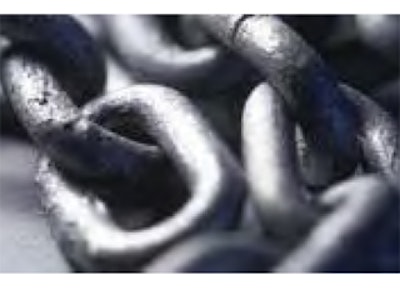
In difficult economic times, Lean thinking strikes a chord for manufacturers as it promises to reduce costs, improve quality, and transform the bottom line by eliminating waste in every area of the value stream, including factory management and supplier networks. Its goal is to eliminate non-value added processing from the customers’ perspective, enabling less inventory, less space, less resource, less time and less cost to produce more – and all highly responsive to customer demand.
Lean manufacturing is about the obsessive elimination of waste – waste being defined by lean practitioners as what customers would perceive as processes and actions that don’t add ‘value’, and for which they don’t want to pay. Given the current difficult conditions for much of manufacturing in the developed world, lean is also commonly associated with getting more from less. But for the tightest definition, go to the U.S. National Institute of Standards and Technology (NIST) Manufacturing Extension Partnership (MEP), which describes lean as “A systematic approach to identifying and eliminating waste through continuous improvement, flowing the product at the pull of the customer in pursuit of perfection.”
Succinct, yes, but useful too because implicit in that sentence is a clear warning for Lean manufacturing wannabes to avoid cherry picking lean initiatives and methodologies – such as simply setting up kanban replenishment, focusing on reducing set-up times, or doing the workplace 5Ss (sort, set in order, shine, standardize and sustain) somewhere in production or a warehouse. Instead, this definition of lean manufacturing leads instantly to the strategic, top down view, as enshrined in lean’s five governing principles.
First, deliver value with, as above, the customer at front of mind. Second, identify the value stream (by value stream mapping all the stages of production, warehousing and ultimately the entire business). Third, make the value flow, with a goal (mostly unreachable) of single piece flow, by moving from the current state to a chosen future state – and remembering, crucially, that information also needs to flow. Fourth, make-to-order, meaning only make or do anything when you need to – using, for example, JIT (just in time) principles. And fifth, strive for (almost unattainable) perfection, using the methodologies and tools for both continuous and blitz (kaizen) improvements. Underpinning all of that thinking is removal of the seven prevalent wastes of lean manufacturing – those aspects that, again, fail to add value.
Addressing Waste in the Real World
Lean thinking is pragmatic. For example, although Lean methodology drives towards zero inventory, zero waiting, rapid changeovers, zero duplication, and so on, its practitioners recognize that much of production and distribution necessarily involves some batch, and even forecast, processes. They also understand that commercial pressures, often beyond a manufacturer’s direct control, influence purchasing, and stocking strategies.
Thus, whether those issues concern material availability and pricing, or customer service strategies dictated by competition, there is scope in Lean thinking for some apparent waste, particularly in the areas of overproduction and transportation. However, while some waste might be justifiable, Lean’s principles consistently emphasize root cause analysis and a sharp focus on systemic improvement – focusing on value, using its improvement methodologies, practices and KPIs, and implementing systems and processes that sustain improvements.
Most importantly, Lean thinking also implicitly recommends judicious use of IT systems, particularly where the intention is to use Lean principles beyond the simple repetitive production environments for which it was originally intended – as in the Toyota Production System. Quite simply, Lean practitioners recognize that in a volatile and/or complex supply chain, whether internal or external, modern manufacturers just cannot implement Lean practices on visual queues and takt times alone. Thus, with appropriate solutions configured to collect data, disseminate information, enable visibility, and automate background processes – such as those around material replenishment and assembly finishing, including outside the four walls of the factory – even complex manufacturing organizations benefit from Lean principles.
That is the case no matter how prone production and supply chains are to the challenges of product mix, demand variability, and/or the realities of breakdowns and resulting material availability problems. Timely information – aimed at delivering visibility of materials, WIP, scrap etc, as well as automating material flow and assisting with the understanding, communication, and resolution of downtime issues – directly addresses the seven wastes.
Hence the rise of Lean Application Solutions in the form of e-kanbans, lean loop replenishment sizing applications, Web EDI and, most recently, Real-time Asset Management Solutions. Looking at the latter, those developed by Zebra Technologies Corporation, offers world-class solutions to optimize the flow of goods and manage assets across the global supply chain.
Zebra Technologies provides an integrated wireless infrastructure for real-time location, digital messaging, telemetry, and wireless networking applications. Together these give manufacturers spanning aerospace, automotive, industrial and government industries the ability to continuously manage the physical location and status of their business critical assets, equipment, and people. Whether tracking containers through a port, optimizing parts for manufacturing or managing ground support equipment at an airport, these automated solutions provide complete visibility and greater velocity to deliver measurable business improvement. In addition, the solutions support Lean principles and reliably and cost effectively manage everything from material replenishment to defective materials and valuable mobile resources, delivering a return on investment within three to twelve months. Based on patented, standards-compliant technology resulting from a collective 100-plus years of development, Zebra Real-time Asset Management Solutions enable companies such as Whirlpool, BMW Subaru, Ford Motor Company, GETRAG FORD, Jaguar Land Rover, and Hawker Beechcraft to reduce inventory, lower operating costs and improve operations through Lean thinking.
See how Real-Time Asset Management Solutions changed GETRAG FORD here.
See how Real-Time Asset Management Solutions changed Jaguar Land Rover here.
Conclusion
By adopting lean manufacturing techniques, supported by Real-Time Asset Management Solutions, you can reduce and/or eliminate the seven wastes of manufacturing. That’s because timely information – aimed at delivering visibility of materials, WIP, scrap and assets, as well as automating material and process flows – is the key to improvement and becoming leaner.
Based on patented, standards-compliant technology, resulting from a collective 100-plus years of development, Zebra Real-Time Asset Management Solutions enable companies such as Whirlpool, Subaru, Ford Motor Company, GETRAG FORD, Jaguar Land Rover and Hawker Beechcraft to reduce inventory, lower operating costs and improve operations through lean thinking.
See the original whitepaper at www.zebra.com.
About Zebra
Zebra offers a broad range of scalable Real-time Asset Management solutions that address wastes and reduce costs, inventory, and cycle times while increasing throughput and asset utilization. The company provides an integrated wireless infrastructure for real-time location, digital messaging, telemetry and wireless networking applications. Together these give manufacturers, spanning aerospace, automotive, industrial, and government industries the ability to continuously manage the physical location and status of their business critical assets, equipment, and people.























